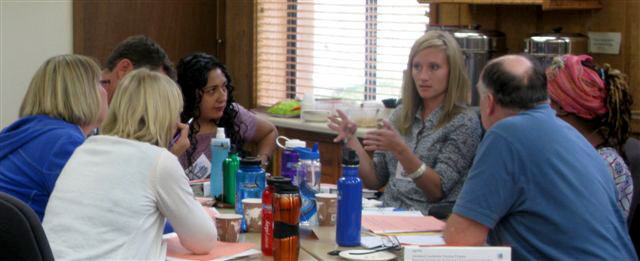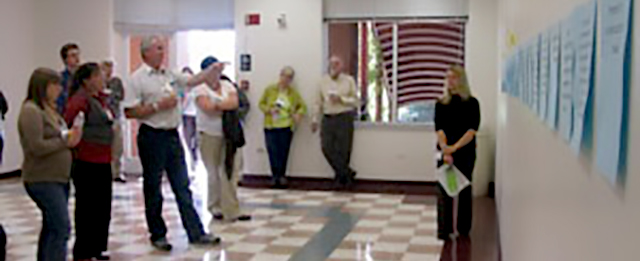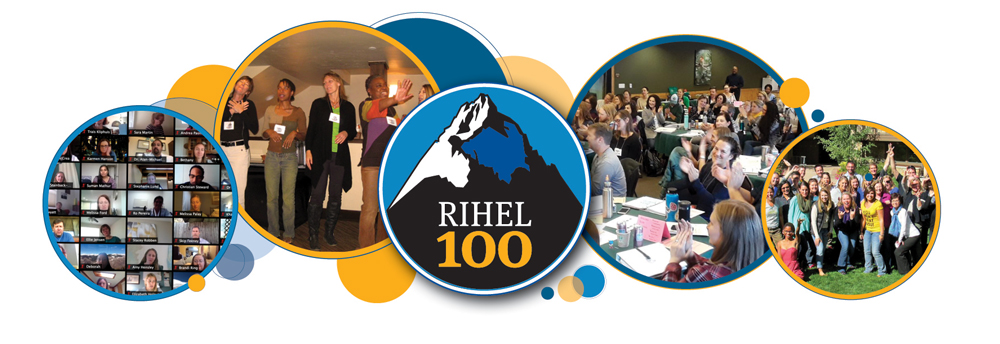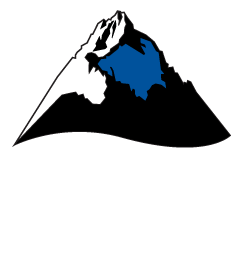Leadership for Healthy Community Design (LHCD)
LHCD
LHCD built the capacity of Colorado communities to lead, plan and execute community design initiatives.
RIHEL delivered LHCD to multiple cohorts and we anticipate delivering it again in the future, but we have not determined when the next LHCD will be held.
Leadership & Capacity
LHCD improved the health of people and the environment by building the capacity of Colorado communities to lead, plan and execute healthy community design initiatives and projects.
LHCD brought together multiple geographically-based community teams to develop their leadership capacity and explore practical applications of healthy community design. Each team included members who represent a different discipline or interest area related to healthy community design (e.g. urban planning, transportation planning, public works engineering, public health, environmental health, parks and recreation, law enforcement, school systems, food systems, elected office, etc.).
The program included several in-person multi-day retreat training sessions, online workshops, assignments between sessions, a 360 degree assessment of personal leadership behaviors, action learning projects, peer coaching, and team project technical assistance. The LHCD curriculum was anchored in the five elements found in the best leadership development programs, and focused on:
- Building participant leadership skills and capacity
- Fostering collaborative leadership practices
- Strengthening relationships and strategic partnerships across disciplines
- Promoting healthy community design practices
- Building capacity for effective and meaningful community engagement
- Technical assistance for successful project development and implementation


Curriculum
Leadership and Healthy Community Design (LHCD) included the five elements found in the most effective leadership development programs.
- Multi-day retreat training sessions and online workshops
- Assignments between sessions including: reading, online videos, online discussion, assessments, and project development.
- A 360 degree assessment for each participant of the personal leadership behaviors practiced by them.
- Action learning projects – each team develops and implements a leadership project that applies healthy design principles and practices in their community.
- Individual peer coaching sessions – each participant meets monthly with their peer coach (a RIHEL leadership program alumni) in support of their personal leadership development.
- Team technical assistance – healthy community design experts serving as technical advisors will meet monthly with their team to coach and advise them as they develop and implement their leadership project.
Curriculum Themes: Leadership and Healthy Community Design Principles
I. LEADERSHIP
A conceptual model is theory that forms the framework for learning, in this case for learning about leadership. The LHCD program uses two conceptual models of leadership:
- Leadership is Behavior. Leadership is behavior, not a personality trait or a position on an organizational chart. RIHEL uses Kouzes and Posner’s behavioral model of leadership, the Five Practices of Exemplary Leadership: Model the way, Inspire a shared vision, Challenge the process, Enable others to act, and Encourage the heart.
- Collaborative Leadership. Collaboration is the most effective known approach to solving complex problems. Leaders understand the importance of collaboration, communication, and networking with interdisciplinary professionals to address today’s complex health and environment challenges.
Program teams are required to conduct an initiative/project that requires their leadership, and addresses a built environment issue in their community through healthy community design principles. For example, a team initiative/project might: (a) expand the local trail system to connect under-served communities with key service destinations (e.g. grocery, school, civic center) to promote walking; or (b) develop zoning incentives to promote healthy food retail in under-served neighborhoods. For more examples, see LHCD Class of 2015 team project summaries.
When a person has a position of authority, or is simply recognized as a leader, then (s)he will be approached for advice, including advice on matters about which (s)he may not know very much. Eliciting the untapped wisdom of a peer or protégé by acting as a “strategic thinking partner” – that is coaching – is an essential skill for a person recognized as a leader. Program time is dedicated to developing coaching skills. During the program, fellows practice peer coaching and are also paired with a RIHEL peer coach (a RIHEL leadership program alumnus). At least one coaching conversation is held per month for six months. In addition to individual coaching, a healthy community design expert will be assigned to each team to serve as a technical advisor, coaching and advising the team on the development and implementation of their leadership project.
The Program will use the Leadership Practices Inventory (LPI) that corresponds directly to the Five Practices of Exemplary Leadership to provide quantitative information about the frequency with which they exhibit those practices. Participants are assisted in interpreting the report and planning actions to help them increase the practices that they want to magnify.
Reflection is the hallmark of a leader, so Program faculty model reflection in the delivery of the program, facilitate group reflection during training events, and assign reflection questions between training events.
Additonal core leadership topics addressed in the curriculum include:
- Health Equity and Environmental Justice
- Inclusive Community and Stakeholder Engagement
- Messaging and Framing
- Personal Communication Skills
- Policy Processes and Advocacy
- Systems Thinking
II. HEALTHY COMMUNITY DESIGN PRINCIPLES
Healthy community design principles comprise a collection of tools, strategies and practices that, when applied to built environment projects, can have a positive effect on the health of people and the environment. Examples include:
- mixed land use and greater land density
- good mass transit options
- good pedestrian and bicycle infrastructure
- multi-modal transportation options
- affordable housing
- community centers
- safe routes to school, play and work
- green space and parks
- access to fresh fruits and vegetables
These concepts encompass similar models known to foster healthier behaviors and environments, such as Smart Growth, new urbanism, sustainable communities, green building, LEED-ND, building healthy places, and the Ahwahnee Principles. In the LHCD program, participants learn about healthy community design principles and tools, and then apply them to team initiatives/projects that have the potential to best address the health, environmental and design challenges in their community.


